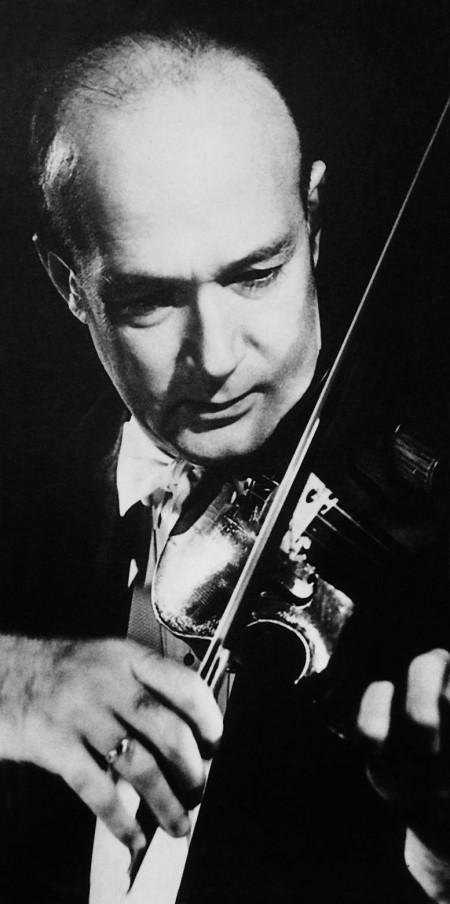5 September 1892, Budapest – 19 February 1973, Luzern
‘I am aware of the transience of our art… therefore I appreciate my recordings and relations with composers the most' – József Szigeti said about himself at an interview shortly before his death. His career testifies that he was led by the appreciation of creation, the compositional creative power throughout his life. Szigeti was not a virtuoso in the conventional meaning of the word, but such an artist who used his extraordinary technical abilities and the power of his musician personality only as tools for the interpretation of compositions. ‘My conviction is that the mode of expression is inherent in the composition, our duty is to bring it to the surface' – he declared. According to his critics one of the secrets of his playing was that – differently from the practice of his time – he interpreted even the technically most demanding works with implicit naturalness, without the pretence of autotelic bravura.
Szigeti was a child prodigy. He concertized at age ten already; following his first appearance in Berlin, at age thirteen József Joachim, the most prestigious violinist in Europe also spoke about his playing with great appreciation. He attended the master school of Jenő Hubay at the Academy of Music between 1903 and 1906, then two of his chamber partners, Ferruccio Busoni and Myra Hess made great impact on his artistic development in his youth. He lived in England between 1907 and 1913. The initial impetus of his career was strongly set back by World War I; therefore he led master classes as a teacher of the Conservatory of Geneva between 1917 and 1924. He resumed concertizing in 1924 and had been touring world-wide for 36 years. There was hardly a large city in the Soviet Union, United States, at the countries of the far-East, South America, South Africa and the Scandinavian countries where he would not have played.
His repertoire covered works from Bach's to our contemporaries' including not only the virtuosic pieces of violin literature but almost all the significant works, as well. His partners were the greatest artists at his concerts. He also performed frequently with Béla Bartók from 1927. Only the recording of their chamber recital in 1940, Washington survived among their concerts. Bartók dedicated his First Rhapsody to him expressing his appreciation and friendship and the Contrasts (with Benny Goodman). Bartók, Szigeti and Goodman made sound recording from the latter in 1940. Ysaye composed his solo sonatas by the inspiration of the Bach interpretations of Szigeti, Bloch dedicated his La nuit exotique, Prokoffiev his Melody, Casella, Hamilton Harty and Frank Martin their violin concertos to him. However Szigeti did not inspire the most significant composers of his time to enrich the literature of violin only by his playing but he felt responsibility about the future of compositions dedicated to him, as well. Besides Bartók and the contemporaries mentioned above he tirelessly propagated the violin, chamber works and concertos of Berg, Debussy, Milhaud, Ravel and Stravinsky. He made transcriptions for violin and piano from a few movements of For Children by Bartók, Serenade by Elgar and excerpts of Capriol Suite by Warlock which he frequently performed at his concerts.
Although the most active period of Szigeti's career falls before the time of the modern sound recording he was glad to make recordings, as well. His Bach, Mozart, Beethoven, Brahms and Bartók recordings are etalons. However he himself did not compose many of the Classical concertos are performed with cadenzas edited by him.
He became American citizen in 1951, and when retired from concertizing in 1960, settled in Switzerland. He primarily focused on teaching from that time and continued his work as a writer, which he started in America already. His books summarizing his career and artistic experiences Speaking Strings (1947), The Violin Works of Beethoven (1965) and About the Violin (1968) are available in Hungarian, as well.



